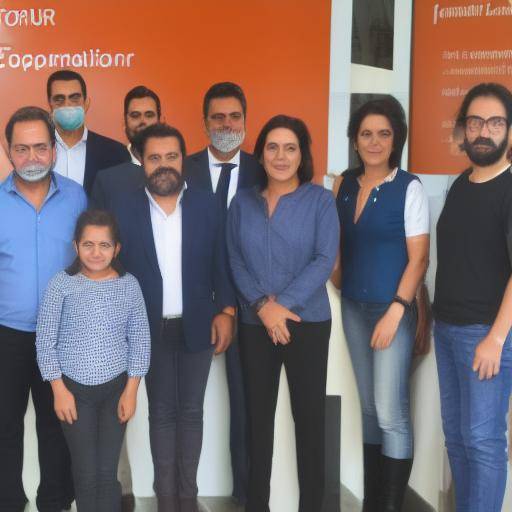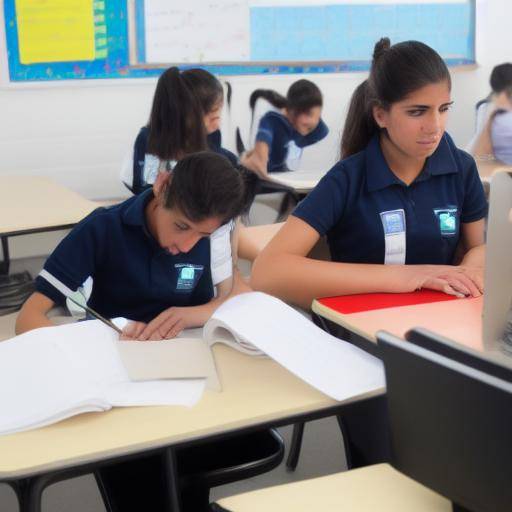
Introduction
Language teaching is a crucial element in a globalized world, where the ability to communicate in different languages is an invaluable asset. In this article, we will explore effective strategies for language teaching, addressing both theory and practice. From historical analysis to future trends, through practical advice and expert opinions, this article will provide a comprehensive and up-to-date view of the field of language teaching.
History and Background
Language teaching has deep roots in the history of humanity. From ancient civilizations that developed writing systems to commercial and cultural exchanges that boosted the need to master foreign languages, the history of language teaching is rich and varied.
The famous " Direct Method" promoted by the Berlitz School of Languages in the nineteenth century marked an important turn in the way languages were taught. From there, numerous pedagogical currents influenced language teaching, such as the audiovisual method, communicative approaches, and the rise in online learning.
How has Language Education evolved?
Language teaching has evolved significantly over the years, from traditional methods focused on grammar and memorization to more communicative and student-centred approaches. Contrary to passive practices, a more dynamic approach is promoted that promotes active participation. This has led to the adoption of innovative technologies and pedagogical strategies that prioritize effective communication.
Main developments and subjects
In the contemporary context, globalization, tourism and international trade have marked a significant increase in the demand for language education. Technological advances have also revolutionized the way in which languages are taught and learned, with the proliferation of applications, online courses and interactive tools that offer attractive and flexible alternatives for students.
Deep analysis
Language teaching offers a number of significant benefits in both the personal and professional fields. Since opening new job opportunities and improving cognitive skills to fostering intercultural communication, dominating a foreign language has a positive impact on people's lives. However, it also presents challenges; overcoming the language barrier, adapting to different writing systems and understanding cultural nuances are just a few examples.
What are the Current Benefits and Challenges in Language Teaching?
The domain of foreign languages opens a range of opportunities in the labour, cultural and social spheres. However, the challenges associated with language learning, such as pronunciation, grammar and cultural approach, must be addressed through effective strategies.
Success stories and data
Current statistics reveal that the domain of a second language significantly increases the wage and professional potential of individuals. In addition, numerous success stories show how language knowledge has transformed lives, opening doors to enriching experiences and unique opportunities.
Comprehensive review
The focus on language teaching has evolved towards a more communication-oriented paradigm and the development of practical skills. Strategies such as linguistic immersion, collaborative learning and the use of digital tools are proving to be effective in promoting fluidity and understanding in a second language.
What are the Best Practices and Approaches in Language Teaching?
Multiple approaches and applications in language teaching have proved to be effective in various educational contexts. From the total immersion method, which immerses students in a complete linguistic environment, to computer-assisted language pedagogy, which leverages the technology to customize learning, there are varied strategies that seek to maximize the potential of students.
Comparative analysis
Language teaching covers a diverse range of approaches and methodologies that vary according to the language, cultural environment and specific needs of students. The comparison between different pedagogical models and the adaptation of strategies to particular contexts is essential for the development of effective language teaching programmes.
How are Language Education Strategies compared and Contrast?
Language teaching strategies vary widely according to the target language, student profile and learning environment. While some methods focus on the acquisition of vocabulary and grammar, others emphasize oral communication and cultural immersion. Understanding these differences and adapting strategies to the context is essential to achieving successful results.
Practical Tips and Accessible Recommendations
The effective implementation of language teaching strategies involves the application of innovative methods and the consideration of individual characteristics of students. The customization of the learning process, the use of multimedia resources and the creation of an enabling environment for practice are key elements for optimizing the acquisition of a new language.
Tips for Effective Language Education
- Promote continuous oral practice.
- Integrate reading and writing exercises.
- Use multimedia resources and educational technology.
- Provide constructive and personalized feedback.
- Create cultural and linguistic immersion scenarios.
Industry Insigths and Expert Reviews
The language teaching industry is constantly evolving, influenced by technological advances, changing labour demands and new pedagogical approaches. Collaboration with language learning experts provides a valuable insight into emerging trends and innovative strategies that are shaping the future of language teaching.
What should Educators know about the Future of Language Education?
The role of technology in language teaching will remain critical, providing opportunities for personalized learning and global interaction. The integration of artificial intelligence tools and adaptation to the individual needs of students are key aspects that will mark the course of language teaching in the immediate future.
Conclusions and FAQs
Conclusions
The domain of foreign languages is a fundamental asset in a globalized world. The implementation of effective strategies in language teaching allows the enhancement of communication and intercultural understanding skills in a meaningful way, opening up new opportunities in the field of work, education and personnel.
Frequently asked questions
What is the importance of language teaching in the current context?
Language teaching is crucial in a globalized world, facilitating intercultural communication, expanding employment opportunities and enriching personal experiences.
How can language teaching strategies be adapted to different student profiles?
It is essential to consider the language skills and individual needs of students, customizing the pedagogical approach to maximize the process of acquiring a new language.
What are the current trends in language teaching?
Current trends show greater integration of educational technologies, communicative approaches and a wide range of multimedia resources that enrich language learning, as well as increased attention to cultural immersion to foster the integral understanding of a foreign language.
What role does technology play in language teaching?
Technology plays an essential role in facilitating access to interactive educational resources, adaptive learning and self-managed practice, offering a range of opportunities to optimize language teaching.
How does the domain of a second language impact in the workplace?
The mastery of a second language significantly expands employment opportunities, especially in a globalized environment, allowing access to international companies and multicultural markets.
What are the best strategies to motivate students in language learning?
The combination of diverse approaches, the inclusion of relevant topics for students and the creation of a positive and participatory learning environment are effective strategies to motivate students in language learning.
What perspectives do experts offer on the evolution of language teaching?
Experts predict greater integration of artificial intelligence, communicative skills approach and adaptation to a global interconnected environment as key trends that will shape language teaching in the future.
This article offers an integral vision of strategies for language teaching, from its historical evolution to future projections. The variety of educational approaches, technological resources and experiences in language teaching demonstrate the importance and continuing relevance of this field in the contemporary world.






















































